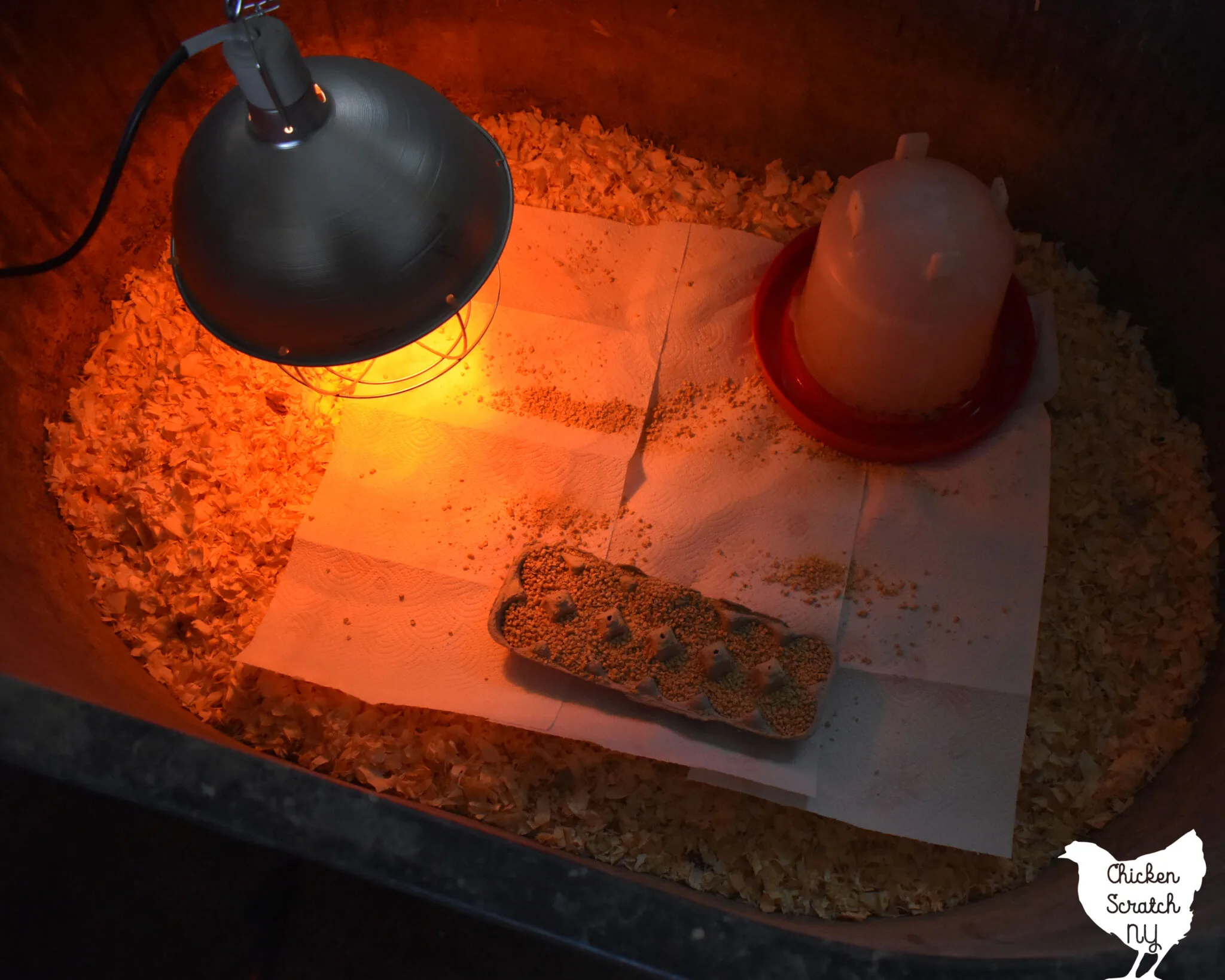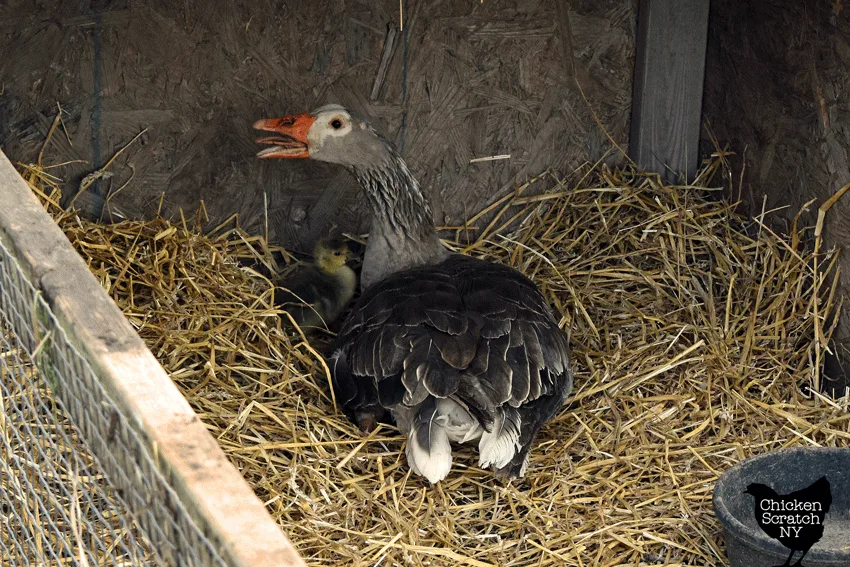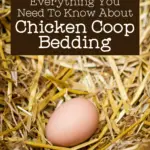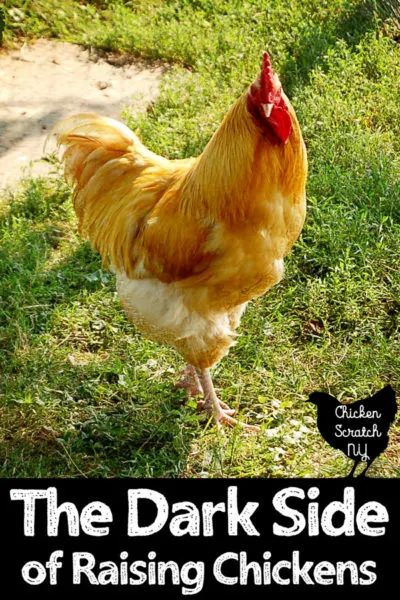One of the most important and least glamorous aspects of chicken keeping is managing the coop (and the poop). Choosing the right chicken bedding is a great way to keep that chore manageable!

I’ve been keeping my own mixed flock of birds including chickens, turkeys, ducks & geese, for over a decade, and over the years I’ve tried a lot of things. All of this information is based on my own experiences and sources that I trust.
Whenever I write an article like this I like to throw out a disclaimer that I live in the frigid and humid North Eastern US. The things that work for me might be terrible if you live in a hot and dry area.
Brooder Bedding
Before you have chickens you’ll likely have chicks and those adorable little puffs belong in a brooder. That’s the chicken lingo for nursery.
Read more about Setting Up a Brooder for Baby Chicks
Chickens are an odd mix of delicate and sturdy as hell, even as babies, but one thing you don’t want to mess with is a dirty brooder. It will wipe them all out.

It’s important to use bedding in the brooder that will stay dry, is easy to clean, and isn’t slippery.
Newspaper or old magazines are a terrible choice, they don’t provide enough grip for the chicks and you can end up with splayed legs and permanently disabled chickens.
I’ve seen people recommend old towels for brooders but I would avoid them because chicks like to scratch and can get their little toenails caught in the thread loops. They’re also going to get trashed really quickly.
My go-to is wood shavings, specifically the flake kind in the white bag from Tractor Supply. They fluff up quite a bit so if you’re only raising a handful of landfowl (chickens, turkeys & guineas) one bag will probably last until it’s coop time.
The large flakes let uneaten food and poop filter down to the bottom keeping the chicks’ feet clean and it gives them something to scratch into their water so you can change it 45 times a day.
If you’re raising any amount of ducks or geese plan on having a lot of bedding on hand. As cute as they are, they’re 60x messier and they way faster.
If you’ve ordered your birds through the mail or hatched them in your incubator (let them dry for 24 hours) I recommend laying down paper towels over the shavings for the first day or so so they can easily find their food.
Read more about Chick Days at Tractor Supply and buying Live Chicks in Store
I don’t want to say chicks are dumb but we want to give them every opportunity to succeed. If you pick up your chicks from TSC or the local feed store they’re already eating and you can skip this step.
Once you’ve made it through the baby stage, it’s time to get your fully feathered birds out into the coop!
Deep Litter Method
The deep litter method of chicken keeping basically turns your coop into a compost bin. Instead of daily or weekly cleanings, you do a few giant cleanouts during the year.
This is my preferred method, not only because it’s more hands-off but because I have a giant garden and well-rotted chicken bedding is like candy for squash and other nutrient vacuum crops.
Everything I take out of my coop ends up in the garden and it’s just one more way to treat my property like an ecosystem. The food scraps from the garden all go to the chickens and then the poop from the chickens goes back into the garden.
It’s important to know that a healthy deep litter coop should smell like soil or wood shavings, if you’re smelling ammonia things are off and you need to get in there and mix it up and add more dry bedding material.
You can think of it as a compost heap your chickens live in. Another added benefit is that decomposition produces heat and that can help keep your birds cozy in the winter.
I like to do a big clean-out in the spring once the snow-melt flooding has passed and again in the late summer so the system has time to get going before the real cold sets in.
It’s always funny to me how much height accumulates, by the end of the winter I have to be careful about smacking my head on the roosts that I can easily walk under during the summer.
I’m not really picky about the bedding I use, the majority is either straw or wood shavings but from time to time I’ll rake up a bunch of dry leaves and dump them in the coop.
Not only does it introduce extra special leaf matter into my eventual compost, it also gives the chickens some extra fun and potential snacks if I happened to scoop up some bugs or worms.
Read more about Keeping Chickens Entertained Indoors
Whether you’re going with a deep litter method or you’re going to be doing full clean out regularly, you’ll need to add something for bedding.
Straw
My current favorite coop bedding is straw. I buy it from local farmers when I can find it and stock up on large bales to hold me over during the winter.
Check local feed mills and small non-chain garden centers for the best prices.

I love it because it breaks down really well, making it a great option for the deep-liter method. I’ve also noticed I have a lot fewer frozen eggs when I keep the boxes stuffed with straw.
Chickens hate piles so all I need to do is toss a few flakes in the coop in the morning and by the time I close the coop up everything is spread out.
It also offers up a few bonus snacks and really goes a long way toward keeping the birds busy when the snow keeps them indoors.
Another reason I tend to pick straw above the other options is that I have ducks and geese in my barn. During the warmer months they tend to avoid sleeping in the coop (I guess the alpacas are better roommates than the chickens) but in the winter they really dig down and bed into the straw.
Wood Shavings
I used to exclusively use flake wood shaving in my coop. They’re easy to store and a lot neater in the car than a bale of straw (and they smell really nice).

Then something happened post-2020 and the prices went absolutely nuts. I used to stock up when they were on sale for $4-5 dollars a bale, now they’re up over $7.
I keep a bale or two on hand for hospital setups and chicks but I just can’t handle those prices when I have other options.
Wood shavings work well in a deep liter setup, they take a bit longer to break down than straw but they do a good job keeping the coop clean.
Sand
I always try to give advice based on my personal experience and in this case, I can’t. A few years ago sand was the big thing in chicken keeping and everyone and their mother was swapping out organic bedding for sand.
The idea behind the sand bedding is it acts like kitty litter, the poop stays on top and you can just sift it out. If you only have a few birds or you really like scooping poop it might be worth looking into.
The Chicken Chick has a very pro-sand in chicken coop article that you might find helpful. I won’t be switching my coop over any time soon but I’m considering it for brooders in the future.
Droppings Boards
This isn’t really bedding but it does deal with poop and keeping your coop clean. Chickens do a lot of their business when they’re roosting at night.
Droppings boards are boards (or I’ve seen people use tarps) that sit under the roosts to catch the poop before it makes it to the floor. They’re cleaned off daily and it really cuts down on the amount of cleaning you need to do in the coop.
I can’t think of an easy way to implement droppings boards in my coop, but if I had a different setup or I was setting up a smaller coop for a few birds I’d definitely experiment with them.
What do you use in your coop for bedding?
Looking for more information? Check out my Chickens page or start here:



